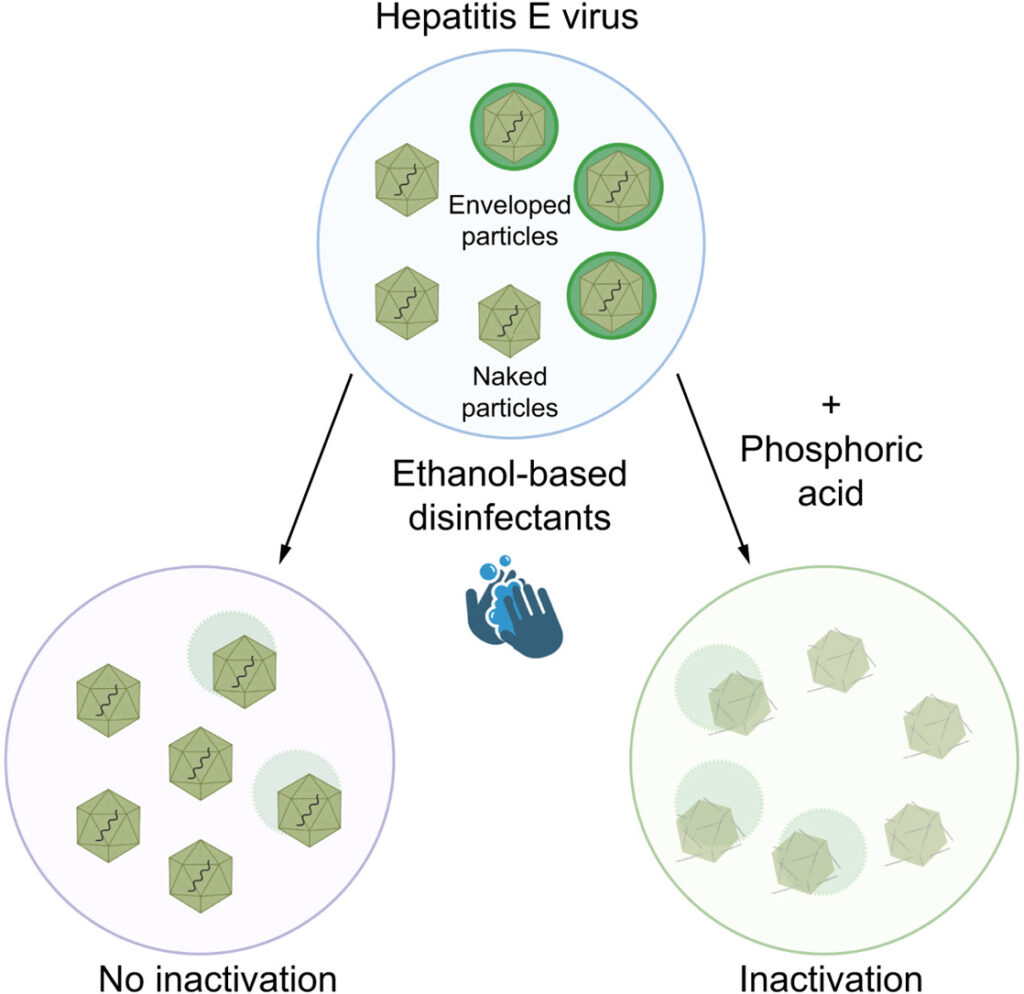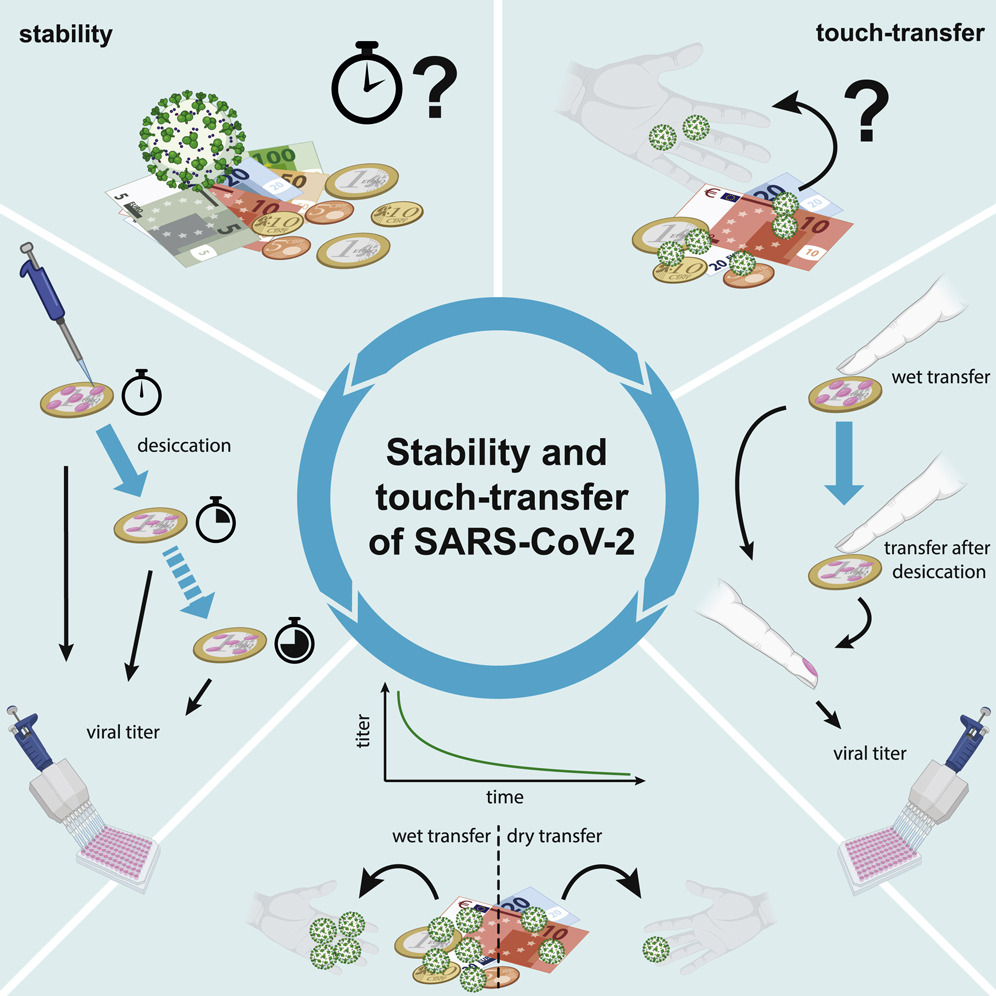Viral transmission
One focus of our work is the study of viral transmission. We are developing new test systems to investigate the stability of viruses to environmental factors and disinfectants, and to develop more efficient prevention strategies in the long term. Our research on viral transmission is divided into two main areas:
1. Stabilität und Transmission von Hepatitis Viren
Millions of people worldwide are infected with viral hepatitis (liver inflammation). In the past, we have been particularly concerned with hepatitis C virus transmission in the clinical setting and applied hospital hygiene. For example, we have tested the stability of the virus, its susceptibility to chemical biocides (Ciesek et al., 2010) and to new disinfectants recommended by WHO (Steinmann et al., 2010; Steinmann et al., 2013). In the context of hepatitis B virus (HBV), we have also observed increased environmental stability and stability to thermal disinfection (Than et al., 2019 and König et al., 2019). Therefore, strict adherence to established hygiene guidelines is essential for the prevention of HBV infection.
Currently, we are primarily concerned with the stability and transmission of the hepatitis E virus (HEV); here, too, we were able to determine increased environmental stability and also high resistance to commonly used disinfectants (Behrendt et al., 2022). In the long term, these studies should serve as a basis for improved hygiene measures to prevent HEV transmission.
2. Transmission umhüllter Viren
In addition to the various hepatitis viruses, we are also exploring ways to transmit or prevent transmission of various enveloped viruses. For example, we have recently shown that enveloped viruses such as Zika, Ebola, and coronaviruses can be inactivated with alcohol-based disinfectants recommended by WHO (Siddharta and Pfaender et al., 2017).
In the wake of the SARS-CoV-2 pandemic, we have also conducted numerous studies on the stability of the virus (Kratzel et al., 2020 and Meister et al., 2020) and different variants (Meister et al., 2021) and developed a new test system (Meister et al., 2022) to investigate how many infectious virus particles can be transferred from cash to skin under real-world conditions. Conclusion: under realistic conditions, the risk of becoming infected with SARS-CoV-2 via cash is very low (Todt et al., 2021).
With our investigations and test systems, we want to contribute to an adequate assessment of transmission risks and thus create the basis for improved hygiene measures.
Our Team:

Eike Steinmann
Professor
Yannick Brüggemann
PhD
Toni Meister
PhD


